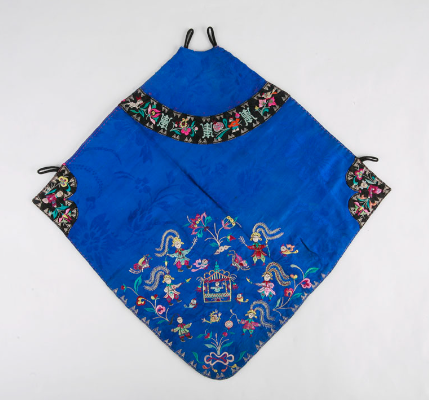Introduction to Dudou
Step into the world of traditional Chinese fashion with a piece that embodies elegance and cultural heritage – the dudou. This unique garment has a rich history, intricate design, and modern appeal that continues to captivate fashion enthusiasts worldwide. Join us as we delve into everything you need to know about the fascinating dude!
History and Cultural Significance of Dudou
Step back in time and uncover the rich history of dudou, a traditional Chinese undergarment that dates back centuries. Originally worn by women during the Ming Dynasty, the dudou has evolved over time to become a symbol of grace and femininity in Chinese culture.
In ancient times, dudous were intricately embroidered with symbols representing luck, prosperity, and fertility. These undergarments were not only functional but also carried deep cultural meanings that reflected societal values and beliefs.
As generations passed, the design of dudous adapted to changing fashion trends while still preserving their cultural significance. Today, modern interpretations of dudous can be seen on runways and in everyday wear as a nod to tradition and heritage.
Whether adorned for special occasions or incorporated into daily attire, the dudou continues to hold a special place in Chinese culture as a timeless garment that celebrates femininity and tradition.
Fabric and Design of Dudou
The fabric and design of the dudou are truly fascinating. Traditionally made from silk or cotton, these undergarments boast intricate embroidery and delicate details that showcase the craftsmanship of the artisans who create them. The fabric used is soft against the skin, making it comfortable to wear throughout the day.
The designs vary from region to region, with some featuring floral patterns while others display auspicious symbols believed to bring luck and prosperity. The attention to detail in each dudou is remarkable, reflecting centuries-old techniques passed down through generations.
From vibrant colors to subtle hues, the dudou comes in a range of options to suit different tastes and occasions. Whether worn as an undergarment or as a stylish statement piece, the fabric and design of the dudou add a touch of elegance to any outfit.
In modern times, designers have incorporated contemporary elements into dudou designs, blending traditional aesthetics with modern flair for a fresh take on this timeless garment.
How to Wear a Dudou
When it comes to wearing a Dudou, there are several traditional methods you can follow.
First, start by placing the Dudou around your torso, with the straps crossing over your chest.
Next, tie the straps securely at the back or front of your body, depending on personal preference and comfort.
Adjust the fit of the Dudou by pulling on the straps to ensure a snug yet comfortable feel.
Some modern variations allow for creative styling options, such as layering the Dudou over or under different types of clothing for a unique look.
Experiment with different ways to wear your Dudou until you find a style that suits your taste and personality.
Remember that wearing a Dudou is not just about fashion but also honoring its cultural significance and history.
Modern Uses of Dudou
In modern times, the dudou has evolved beyond its traditional roots and found new uses in fashion and self-expression. Fashion designers have incorporated dudous into contemporary clothing designs, blending the traditional garment with modern aesthetics to create unique and stylish pieces.
Many people now wear dudous as standalone tops or layer them under sheer blouses or low-cut dresses for a touch of elegance and modesty. The versatility of the dudou allows it to be styled in various ways, making it a versatile addition to any wardrobe.
Social media influencers and celebrities have also popularized the wearing of dudous as outerwear, showcasing creative ways to incorporate this traditional Chinese garment into everyday outfits. With its intricate patterns and beautiful fabrics, the dudou adds a touch of sophistication to any ensemble.
Whether worn casually with jeans or dressed up for a special occasion, the modern uses of the dudou highlight its timeless appeal and cultural significance in today’s world.
Controversies Surrounding Dudou
The traditional Chinese garment dudou has stirred up some controversies in modern times. Some critics argue that the dudou perpetuates outdated gender norms due to its association with femininity and modesty.
Others, however, defend the dudou as a symbol of cultural heritage and tradition that should be preserved and celebrated. The debate surrounding the dudou raises questions about the intersection of fashion, culture, and identity.
Additionally, there have been discussions about cultural appropriation when non-Chinese individuals wear or commercialize the dudou without understanding its historical significance. This highlights broader issues of respect for diverse cultures in a globalized world.
Despite these controversies, many people continue to embrace the beauty and craftsmanship of the dudou, recognizing it as a unique expression of Chinese culture with a rich history worth exploring further.
Conclusion
Dudou, with its rich history and cultural significance, has stood the test of time as a traditional Chinese undergarment. Its fabric and design showcase intricate craftsmanship that reflects the artistry of ancient times. Knowing how to wear a dudou properly can add an element of elegance to any outfit.
In modern times, dudou has found new uses beyond being just an undergarment. It is now incorporated into fashion trends and even worn as outerwear for stylish ensembles. However, controversies surrounding its origins and appropriateness in today’s society continue to spark debates among historians and cultural enthusiasts.
Despite the ongoing discussions about dudou, one cannot deny its enduring charm and influence on Chinese heritage. Whether viewed as a piece of clothing or a symbol of tradition, dudou remains an integral part of China’s cultural tapestry—a reminder of bygone eras preserved through generations.
As we unravel the layers of history woven into each dudou garment, we come to appreciate not only its aesthetic appeal but also the stories it carries within its threads. Let us continue to celebrate this timeless attire that bridges the gap between past traditions and contemporary fashion sensibilities.







